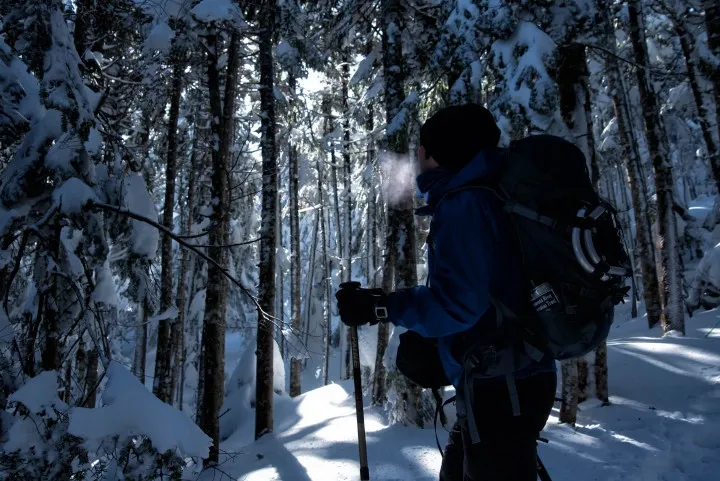How do you keep warm during outdoor adventures like hiking or camping? Follow our simple expert tips and explore the great outdoors in comfort this winter.
With winter officially here, it’s the perfect time to get into those cold-weather activities. Bundling up and going hiking, backpacking, or winter camping is an experience like no other. But if sleeping in the snow isn’t your jam, you might be more inclined to go ice fishing, snowshoeing, skiing, ice skating, sledding or snowmobiling. These are all great outdoor activities to do when Jack Frost finally visits us.

Nothing compares to wandering in the woods and seeing the glimmer of ice crystals on the frosty trees and snow-capped mountains. However, there are a few things you need to be aware of when going out in the snow. Winter camping is pretty dangerous if you’re not fully prepared. You’ll want to be informed regardless of what cold-weather activity you’re doing, from hiking up a frozen waterfall to skating a lake. Winter activities are fun, but being cold is not (ask your nipples how they feel!)
First and foremost, you should ensure you have the correct gear. We’ll suggest what essential items to pack for the day and overnight trips. Then we’ll share expert survival tips on how to stay warm during your winter activities.
Cold-Weather Gear to Bring for Winter Activities
The best gear to keep you warm during cold-weather hiking, camping, backpacking and snowshoeing
When you’re out in the cold, you need the right equipment. Even if it’s just for a couple of hours, it’s good to double-check you have everything you need. Here’s a list of items we recommend bringing along.
Wool Clothing – Wool is the best fabric to wear in the cold for a few reasons. For one, it stays warm even if it’s wet. If you’re sweating, that is an important feature. We recommend Merino wool base layers – nothing keeps you warm like Merino wool! It’s also a good idea to invest in Merino wool socks.
Extra Layers – If it’s your first time spending hours in the cold, you might think a warm jack and a sweater are enough. While you should have a good winter jacket, you should also wear layers. The space between layers helps you keep warm. It also allows you to cool down if you’re too hot from hiking during the day. Layers allow you to regulate your temperature, which is important.
A Good Travel Mug – This might cost more than you want to spend, but a well-rated travel mug or thermos will keep your beverages hot for several hours and, in turn, help your body stay warm. You’ll be grateful when your morning coffee or tea retains its heat hours after you make it.
Flashlight – It’s important to bring light even if you’re only going out for a short day trip. Because the days are much shorter in the winter, it’s easy to find yourself in the dark without much notice. Looking up the time for sunset is a good idea ahead of your adventures.
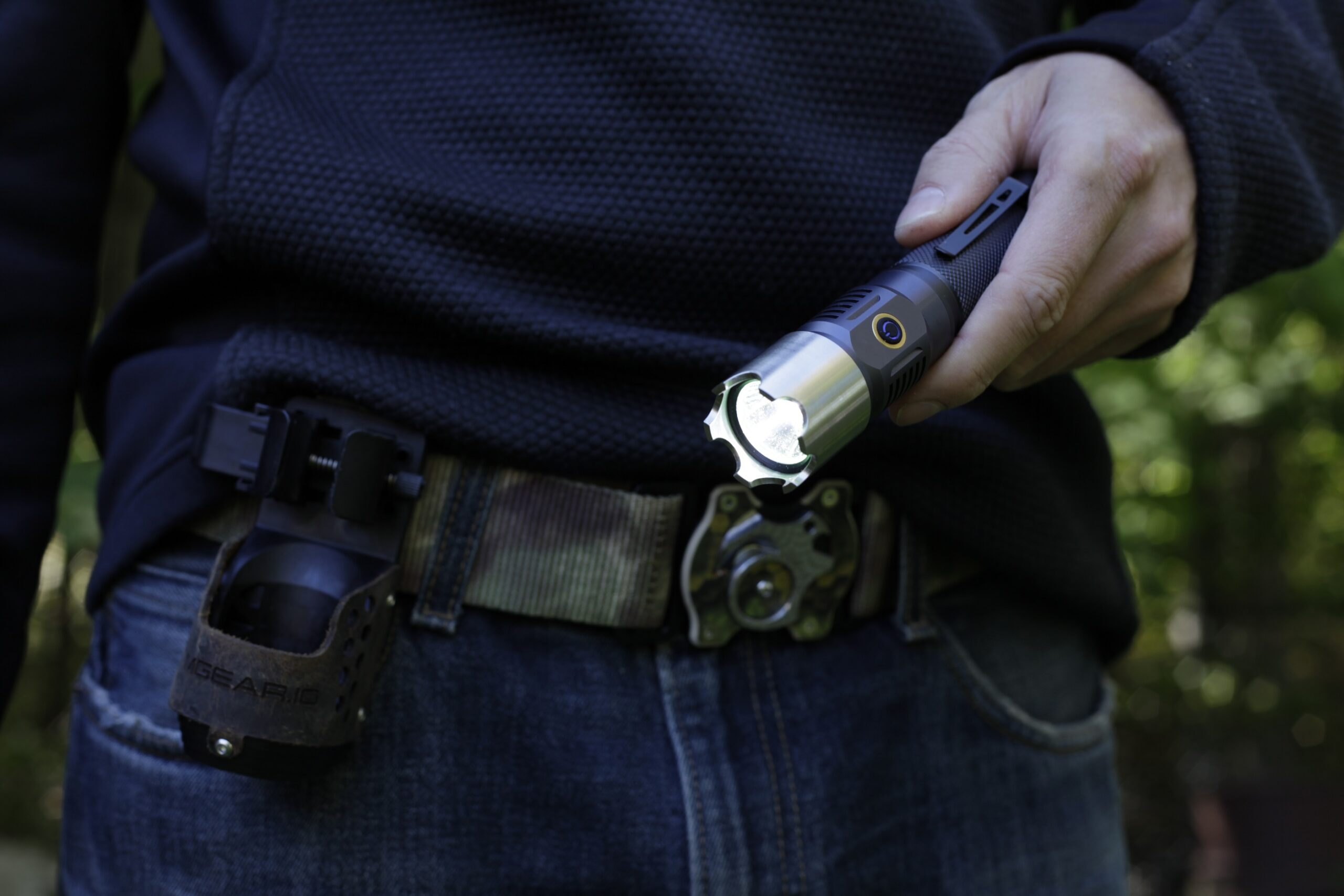
Hand Warmer Packs – These packs will keep your hands warm for hours, and although you don’t want to use them all the time, they’re an important item to have in your backpack in case your hands or other parts of your body get cold. Often, these packs will provide heat for 8 hours and get much hotter than you expect. You can even buy them for your boots to keep your toes from freezing. Another great way to use them is to place one on the back of your neck in a scarf.
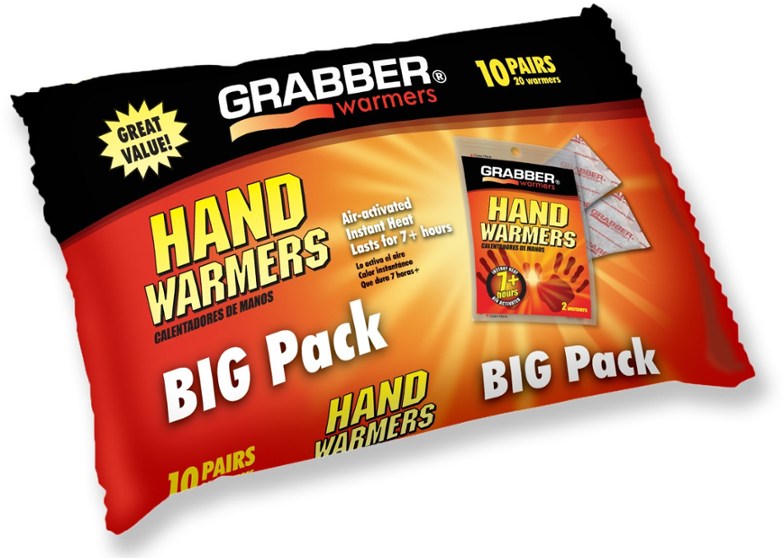
Snacks – Whether your adventure lasts for several hours or a few days, you will want to bring nutrient-dense snacks and water. Tea and coffee are always nice and provide a kick of caffeine if you need it.

Sunscreen – This might seem absurd, but it’s important to wear sunscreen in the snow. Just ask any skier about their first goggle tan. The sun reflects off the snow and can easily burn your face if exposed.
PRO TIP: Mittens will keep your hands warmer than gloves. As we mentioned earlier, the air between layers keeps you warm, and that’s how mittens keep your hands warmer. You can always wear thin gloves inside your mittens – this way, you can always remove the mittens for tasks that require more dexterity.
Cold-Weather Gear to Bring Winter Camping
Essential gear for cold-weather camping
What if you’re camping in the snow? What should you bring? You’ll need to bring some extra items for the overnight temperature drop. You are much more at risk of developing hypothermia at night, so these are some items to bring to avoid that from happening.
The essential cold-weather camping equipment we recommend includes:
Proper Sleeping Arrangements – First, you want to ensure your sleeping bag is rated for lower temperatures; you should also bring a closed-cell foam sleeping pad. Many of us love air mattresses, but they make you colder [by transferring the cold from the ground to your body]. Your body can’t heat all the air inside, so it’s likely to be just as cold as sleeping on frozen ground. One more thing to know is that a synthetic sleeping bag is better than a down sleeping bag because if the down gets wet, the feathers will clump, and you’ll be colder.
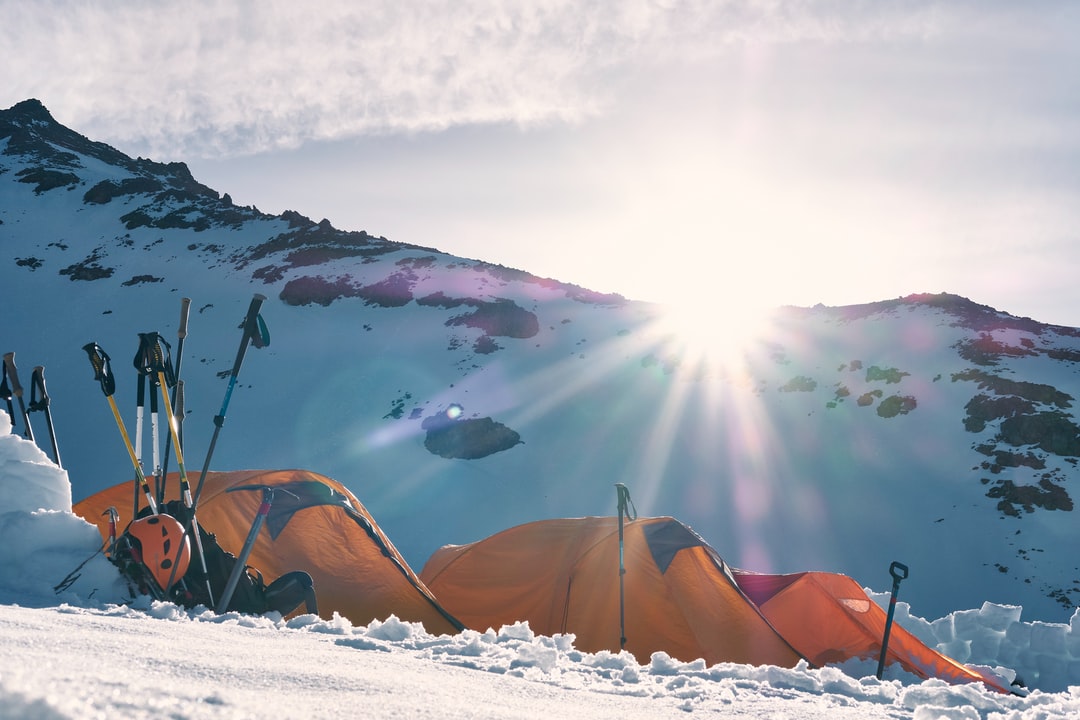
Dryer Lint – This is a great way to start a fire easily and costs you nothing. All you have to do is raid the laundry room for some spare lint and pack it in a bag! If you don’t have a dryer, you can always pack other fire starters like flint or empty egg cartons.
An Axe – You can’t have a fire without wood. Bringing some along isn’t always possible, so an axe can help you chop some firewood.
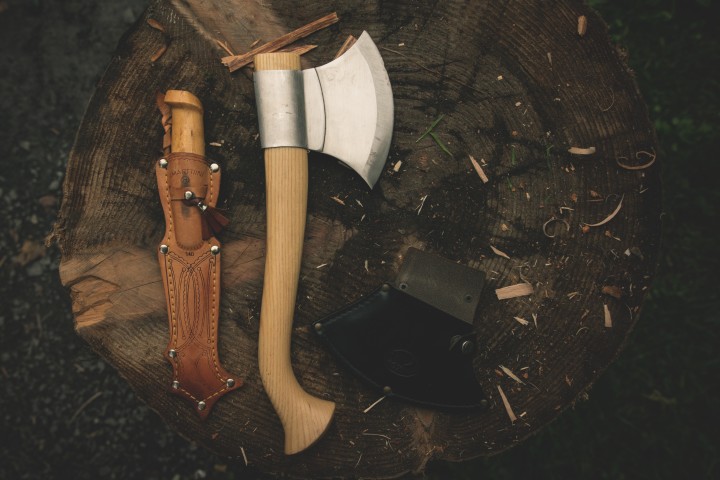
Separate Clothes for Sleeping – While it might not feel like it, the clothes you wear during the day are likely a bit damp from sweat or moisture in the air. When you’re out in the cold you always want to stay as dry as possible to keep warm, especially at night. Be sure to pack a separate outfit to sleep in.
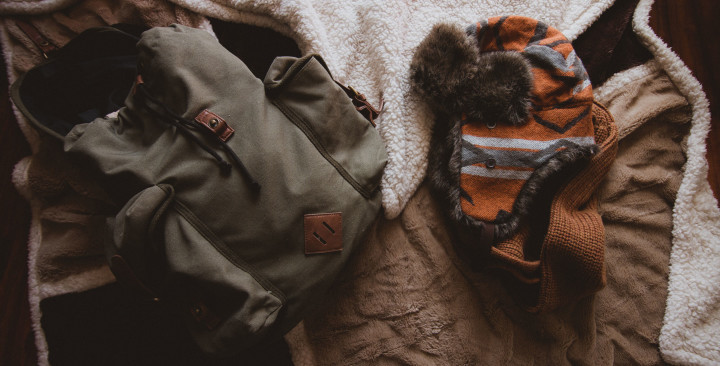
PRO TIP: Preheat your day clothing as you sleep! You can warm up your clothes for the next day by sleeping with them as a pillow or inside your sleeping bag.
Hard Plastic Water Bottle – Staying hydrated is always important when exercising. Another reason we recommend this is so that you can put hot water in it. Before going to sleep, you can place the warm bottle in your sleeping bag, and then when you curl up for bed, it will be nice and warm.
10 Expert Survival Tips to Keep Warm in Cold Weather
Critical winter survival tips that will keep your body warm and comfortable
While proper gear for cold weather adventures is critical, understanding how to keep yourself warm is equally as important. These tips from survival experts will keep you toasty and comfortable no matter how far away from civilization your adventures lead you.
#1 Make a healthy breakfast. A hearty breakfast will provide energy for the day and warm you up immediately in the cold morning air. Here are some easy suggestions:
- Hot oatmeal with berries
- Ramen with extra dehydrated veggies
- Boil an omelette in a Ziploc bag
#2 Drink hot beverages. Do this as soon as you wake up and throughout the day. You should also drink a hot beverage and eat a chocolate bar before bed. Your dinner will provide some energy, but a snack just before bed will metabolize and provide energy and warmth in the middle of the night.
#3 Soak up the sunshine. Spend as much time as possible in the sun to keep warm during the day.
#4 Keep moving. Exercise is the easiest way to stay warm, so if you’re hiking, be sure not to take a break for too long since you’ll lose heat faster than you’re making it.
#5 Ventilate your tent. While it might seem counterintuitive, opening some of the windows in your tent will reduce condensation. The hot air you exhale as you sleep can make your tent damp inside, even if everything else is dry, so you must have some vents open to let it escape.
#6 Pee before bed. You always want to empty your bladder because if it’s full as you sleep, your body is spending energy to keep your urine warm.
#7 Camp away from the wind. If you can, seek shelter for your campsite under trees or in a covered area. This will keep you warmer if it gets windy.
#8 Stay dry. We always suggest avoiding cotton as when it gets wet, it gets cold, unlike wool or synthetic fabric. You should also pack spare dry clothes so that you’re prepared if anything happens to the ones you’re wearing.
#9 Start a fire. If you’re setting up a campsite for the night, collect lots of firewood while it’s still light outside. Then as the temperature drops, burn a fire as long as you can to warm up before bed.
#10 Sleep off the ground. If camping in the snow, you must keep your sleeping bag off the ground. Some people use a cot, but you can also use two sleeping pads to keep yourself further from the ground.
That’s a wrap! Now you know what important gear to bring for your next winter hiking adventure or a snowball fight with the kids. If you enjoyed this article, be sure also to check out our Outdoor Survival Guide For Every Adventure – where you’ll learn all the key skills you need to tackle just about any outdoorsy experience.
Happy Adventuring!
